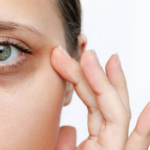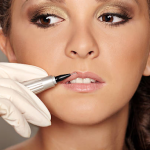Many individuals with sensitive skin question whether microdermabrasion is a safe option for their skincare routine. This article will delve into the intricacies of microdermabrasion, its potential benefits and risks for sensitive skin, and how to prepare for and care for your skin if you choose to undergo this treatment. With careful consideration and professional guidance, microdermabrasion can be tailored to suit even the most delicate of skin types.
Understanding Microdermabrasion: A Quick Overview

Microdermabrasion is a non-invasive procedure that exfoliates the top layer of dead skin cells, promoting the growth of new, healthy cells and a smoother skin surface. This widely acclaimed cosmetic treatment can help in diminishing fine lines, wrinkles, and acne scars, leaving the skin looking fresher and more youthful. But, given its exfoliating nature, questions arise about its suitability for sensitive skin types.
There are two primary techniques used in microdermabrasion: crystal and diamond-tip. Crystal microdermabrasion blasts tiny crystals onto the skin to remove dead cells, whereas the diamond-tip method uses a diamond-encrusted tip to gently sand away the outer layers of the epidermis. Each technique offers different levels of abrasion and, consequently, different suitability for sensitive skin.
Sensitive Skin and Exfoliation

Sensitive skin is more prone to inflammation and adverse reactions than other skin types. It reacts quickly to both external and internal triggers, resulting in redness, itching, or irritation. To care properly for sensitive skin, it’s crucial to understand its characteristics and the specific needs that come with this delicate condition.
Traditional exfoliation methods, such as scrubs with coarse particles or chemical peels, may be too harsh for sensitive skin. Such methods can disrupt the skin’s protective barrier, leading to increased sensitivity and potential skin damage. Therefore, individuals with sensitive skin need to seek out gentler exfoliation alternatives.
Microdermabrasion for Sensitive Skin: The Pros and Cons
Microdermabrasion for sensitive skin must be performed with a cautious approach. However, when done delicately, it can successfully remove superficial imperfections without overly irritating the skin. The trick lies in customizing the intensity and frequency of the treatment to accommodate the lower tolerance of sensitive skin.
Potential Benefits of Microdermabrasion for Sensitive Skin
When performed correctly, microdermabrasion can provide significant benefits for sensitive skin, such as improved texture, reduced fine lines, and a more even skin tone. Here are several potential benefits numbered for easy reference:
- Stimulates blood flow for a healthy glow.
- Minimizes appearance of pores.
- Enhances product absorption.
Risks and Considerations for Sensitive Skin Types
Despite these benefits, there are risks involved when sensitive skin undergoes microdermabrasion. The skin may respond with increased redness, swelling, and tenderness. To minimize these risks, it’s crucial for individuals with sensitive skin to consult with a skincare professional to get a personalized microdermabrasion plan laid out.
Preparing for Microdermabrasion When You Have Sensitive Skin
Preparing your sensitive skin before a microdermabrasion treatment is as crucial as the procedure itself. Hydration is key, so ensure the skin is well-moisturized before treatment. It’s beneficial to avoid sun exposure, waxing, or any other form of exfoliation for at least a week before the appointment to prevent additional sensitivity.
Finding a professional who understands and has experience treating sensitive skin is paramount. Seek out estheticians or dermatologists who specialize in sensitive skin care and have a record of gentle, effective treatments. Recommendations from friends and thorough consultations are always a good idea before making a decision.
During a microdermabrasion treatment, patients can expect mild discomfort, particularly those with sensitive skin. The process is typically quick, lasting around 30 minutes to an hour. Ensuring clear communication with the practitioner enables adjustments to be made for your comfort level throughout the treatment.
Post-treatment skin care is crucial, especially for those with sensitive skin. The following table outlines some helpful aftercare tips.
| Action | Benefit |
|---|---|
| Apply a gentle, fragrance-free moisturizer. | Helps soothe and protect the skin. |
| Use a sunscreen with an SPF of at least 30. | Prevents UV damage to the newly exposed skin. |
| Avoid makeup for 24 hours post-treatment. | Lets your skin breathe and recover. |
Following these aftercare instructions can help mitigate irritation and enhance the treatment’s effectiveness.
After microdermabrasion, it’s important to maintain a consistent, gentle skincare routine. Integrating products tailored for sensitive skin will aid in prolonging the benefits of the treatment. The use of non-comedogenic, hypoallergenic products can help maintain the results and minimize any adverse reactions.
Alternatives to Microdermabrasion for Sensitive Skin
If microdermabrasion proves too intense for your sensitive skin, consider gentler exfoliating options. These can range from enzymatic exfoliants to non-abrasive peels, which offer skin renewal without the potential for irritation associated with physical exfoliants.
Besides exfoliation, there are other skin-friendly treatments suitable for sensitive skin. Hydration-centric treatments, such as hyaluronic acid masks or oxygen facials, can impart benefits similar to microdermabrasion with a lower risk of irritation.
Conclusion
In conclusion, while microdermabrasion can be beneficial for rejuvenating the skin and improving its texture, those with sensitive skin should proceed with caution. It is essential to consult with a dermatologist or skincare professional to assess your skin’s compatibility with the procedure and to follow pre- and post-care instructions carefully. When done correctly, microdermabrasion can be a safe addition to a sensitive skin care regimen with proper guidance and consideration.
FAQs About Microdermabrasion and Sensitive Skin
Let’s address some common questions regarding microdermabrasion for those with sensitive skin:
-
Q1: Can microdermabrasion trigger skin sensitivity or increase redness?
- A1: Microdermabrasion involves exfoliation which can sometimes lead to increased sensitivity or redness, especially in individuals with sensitive skin. It’s important to use a gentle touch and proper aftercare to minimize these effects.
-
Q2: How often should someone with sensitive skin get microdermabrasion treatments?
- A2: The frequency of microdermabrasion treatments for someone with sensitive skin should be less than that of someone with less sensitive skin types and always under the guidance of a professional. Typically, it’s recommended once a month or bimonthly to prevent over-exfoliation.
-
Q3: Is home microdermabrasion safe for sensitive skin?
- A3: Home microdermabrasion kits tend to be less intense than professional treatments, but they still pose a risk for sensitive skin. Always start with a patch test and choose products specifically designed for sensitive skin.
-
Q4: Are there specific microdermabrasion techniques that are safer for sensitive skin?
- A4: Diamond-tip microdermabrasion is often considered a gentler option than crystal microdermabrasion, making it a potentially safer choice for those with sensitive skin. However, professional assessment is crucial.
-
Q5: How can I soothe my sensitive skin after microdermabrasion?
- A5: To soothe sensitive skin after microdermabrasion, apply calming, fragrance-free moisturizers or serums containing ingredients like aloe vera, chamomile, or hyaluronic acid to hydrate and reduce irritation. Avoid harsh chemicals, extreme temperatures, and sun exposure.


